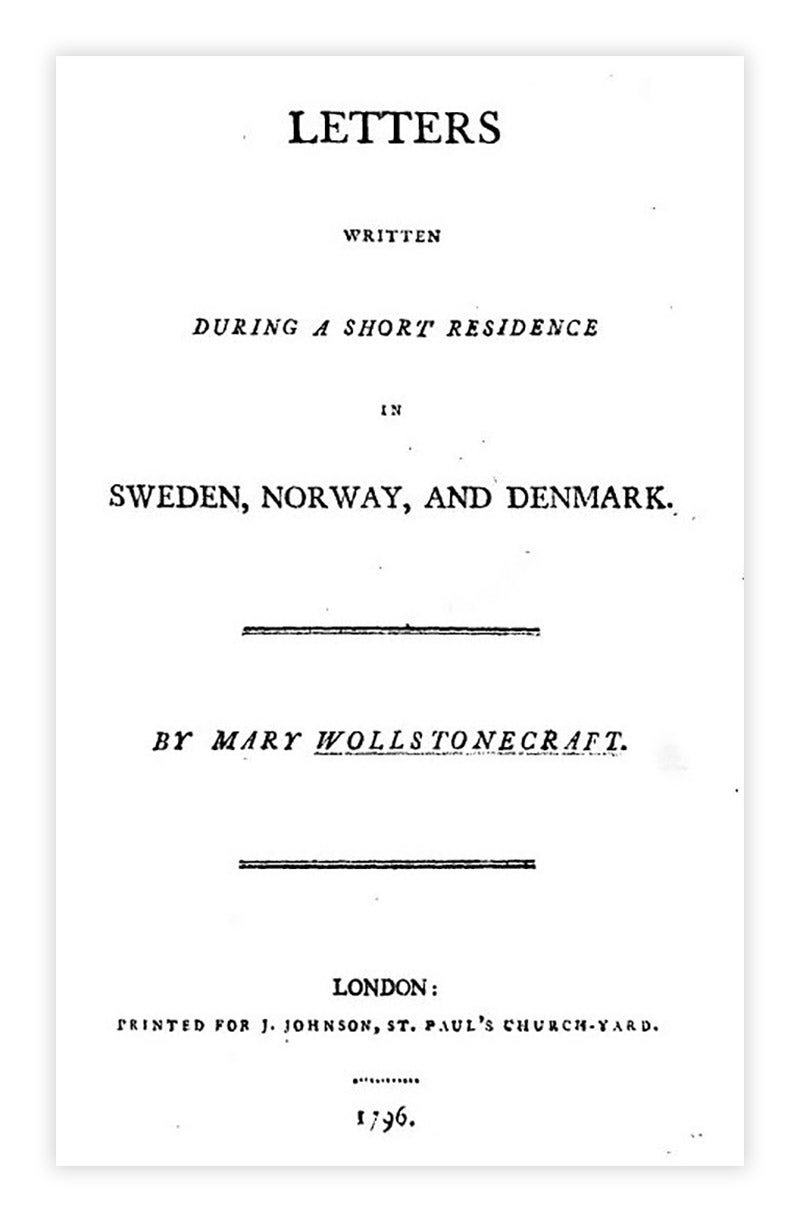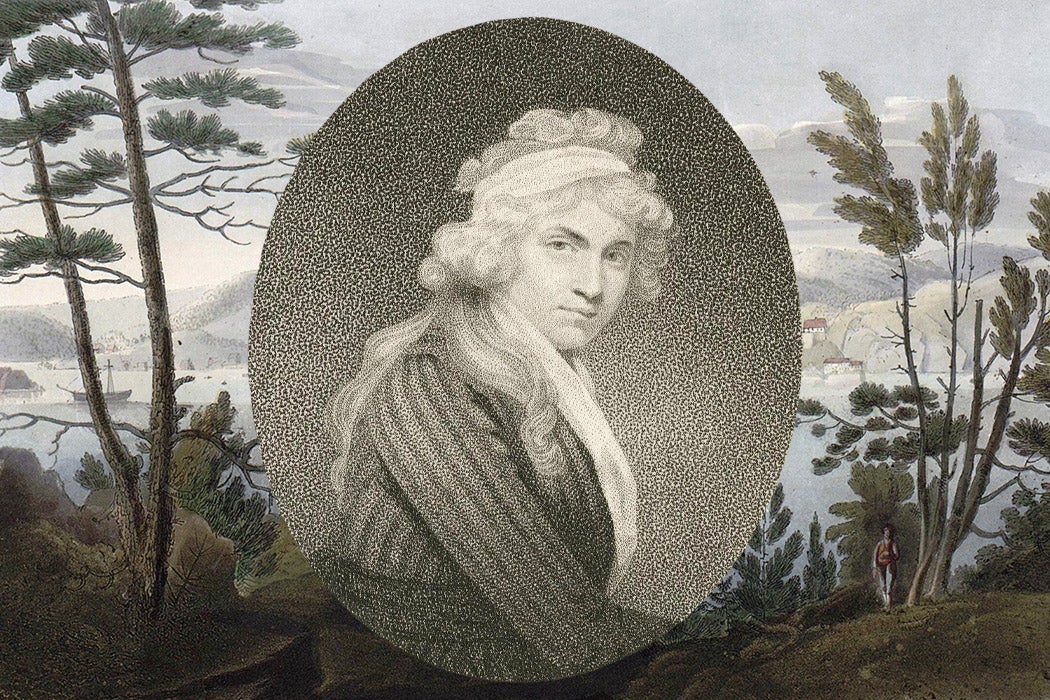When Elizabeth Gilbert’s sensationally popular memoir Eat, Pray, Love was published in 2006, readers felt like they were being treated to something new. Here was a female writer who, seemingly for the first time, blended an engaging travelogue with an honest and intimate account of personal trauma. What many may not know is that, despite the critical and commercial success of Eat, Pray, Love, it wasn’t the first narrative of its kind. More than two centuries earlier, in 1796, Enlightenment philosopher Mary Wollstonecraft published her Letters Written During a Short Residence in Sweden, Norway, and Denmark to widespread acclaim.
Women’s travel writing in the eighteenth century was sparse, its authorship typically restricted to wealthy aristocratic ladies writing as a pastime during or after being abroad with their families. Missing was the objective of producing a bestseller. Turkish Embassy Letters by Lady Mary Wortley Montagu was such a book: informative yet guarded, with the author always conscious of the threat to her reputation if she included content better left secret.
But Wollstonecraft wasn’t an aristocrat with a high social status to uphold. She was a middle-class working author and journalist who had a young daughter (Fanny Imlay) to support and inner demons to work through in the form of a project. This turned out to be the key for writing a trailblazer. And Wollstonecraft also wasn’t scared of critics. She’d already penned and published the explosive A Vindication of the Rights of Woman in 1792. She could, and would, write whatever book she had in her head.

Like Elizabeth Gilbert, Wollstonecraft embarked on her physical and spiritual journey in the aftermath of a major relationship breakdown. Gilbert went through a divorce, Wollstonecraft split with her American lover, Gilbert Imlay. Wollstonecraft was traveling across Northern Europe in a vain attempt to win him back; he needed someone to track down valuable cargo that had been stolen by a shady business associate. Wollstonecraft didn’t succeed in recovering the goods, but she did acquire a rich trove of material in the form of the letters she exchanged with Imlay. The resulting book, Letters Written During a Short Residence in Sweden, Norway, and Denmark, sold well and helped alleviate attitudes toward women traveling alone and having worldly adventures accompanied by revelations. This is exactly what Eat, Pray, Love would do in its own era.
In Romantic Outlaws, a dual biography of Wollstonecraft and her equally famous (second) daughter Mary Shelley, Charlotte Gordon not only traces the history of Letters of Sweden’s publication but also includes her own review of it. Swap the names, and it could easily be a review of Eat, Pray, Love, in terms of the book’s best merits and ground-breaking achievements within its parallel genres.
“The book is a psychological journey, one of the first explicit examinations of an author’s inner life, tracing Mary’s path from despair to self-acceptance, from desolation to a hard-won tranquility,” Gordon writes. “As such, Letters from Sweden is a reflective, innovative book, an emotional but philosophical announcement of the artist’s artistic goals, her initiation of an artistic revolution. As one modern critic puts it, Mary’s ‘revolutionary feminism’ allowed her to transform the genre of travel writing.”
“Wollstonecraft gains authority for her writing by inviting readers to an ‘intimacy’ with her,” suggests literature scholar Christine Chaney. From the outset, it appears that the reader is privy to the innermost thoughts and details of Wollestonecraft’s transformative journey. However, as narrative theory analyst Mary Heng notes, Wollstonecraft heavily edited and altered some of the letters to present a more idealized and level-headed version of herself, hiding the emotional crisis she was experiencing while writing.
Weekly Newsletter
Here Gilbert can be given more credit in terms of authenticity; her book may have been a bit more honest, venturing a bit more shamelessly into gritty and explicit territory. However, as Chaney reminds us, the stigma around sensitive topics such as suicide and uninhibited female romantic and sexual passion, especially in print, was extreme in Wollstonecraft’s time. Wollstonecraft may not have been able to get away with bending the truth in our no-nonsense, fact-checking, twenty-first-century literary culture, but perhaps she can be forgiven for her act of self-preservation, as a struggling single mother writing to make a living, at the end of the 1700s.
Gilbert’s Eat, Pray, Love and Wollstonecraft Letters shouldn’t be pitted against each other for the imaginary title of Best Woman’s Travel Memoir of All Time but instead appreciated separately for the bravery with which each author appealed to their contemporary audiences. The message of both books is clear and kindred: travel with me, and see what I see. Understand me, and don’t judge me. Read on with an open mind.
Support JSTOR Daily! Join our new membership program on Patreon today.







